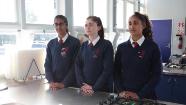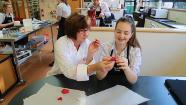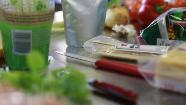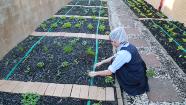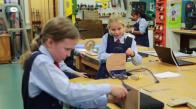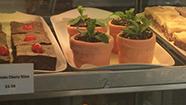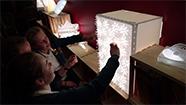Students make community connections through their technology projects.
Engaging community projects for food technology students
Transcript
Noeline Stewart: For the community connections that we’ve used in our technology projects, started with doing a project where we worked for the Canterbury earthquake where we made a product and sold them and then were able to give some profit to our sister school at Avonside Girls. From there, each year we’ve tried to find a community project that is something relevant in our Hastings community that the girls can really buy into. We’ve worked with the Hastings Food Bank Trust. We’ve worked with a local primary school, Camberley School. Last year we worked with Age Concern, and this year we’re working with Little Elms and also the children's ward at the Hawke’s Bay Hospital.
One of the key things we’ve found is that it’s really important to build a relationship with the client or stakeholder in the community. When I front up asking if we can do a project where we can raise some money for them, or give them a gift box for people for Easter, they are often a little confused as to perhaps why we’re doing that. So I need to give them a little bit of background. As I see them more often and we get to talk with them, and they see what the girls are doing, it tends to grow. So the relationship with them is really important.
Eddie Blowes: Well, we got approached by Hastings Girls' High. As a result of that, I went down with a parcel of food and ended up with this classroom of really enthusiastic girls who raised us a couple of thousand dollars, which we wouldn’t normally have got, and that was really good. They ran a project which also resulted in a cookbook. We had a MasterChef cook-off using all the recipes in here, which was for one of their projects on which they were evaluated.
Noeline Stewart: We also worked with Te Rourou, our school cafeteria, last year. My year 12 class identified that it would be good to come up with some nutritious, filling, economical meals that our students could buy just as a little bit of difference. Each of them worked to find out what our school community would like and tested and trialled some meals. We ended up selling those through our school cafeteria and that was really quite successful.
Student one: I’m making a four berry jam and I’ll be donating it to Little Elms for families if their children are in hospital. So that the families will have somewhere to stay.
Noeline Stewart: Our school is very keen for students to think about other people and to develop some of that kind of community link. I think it’s helped the girls to develop empathy, understanding, and to just be prepared to do something for someone else.
Student one: I enjoy doing this project because Little Elms has given me the opportunity to do things for other people, and it makes me feel good about myself.
Noeline Stewart: The key competencies are really important with our community-based projects, particularly things like thinking and self-management. We find those are skills that our students develop in a really good way over the time. They have to be quite independent and they have to organise themselves and there’s an awful lot that they learn from this.
Student two: I have enjoyed the manufacturing work because it’s helped me be independent. I’m not getting told what to do. I do things myself and tell other people what to do. For example, I found a recipe and I’ve tested it several times.
Noeline Stewart: Students have found it quite a new thing to be cooking and making food, and making products for other people, as opposed to just something that they would take home for themselves. Our whole focus with our community projects has been about making something for someone else. We’ve found that once our students kind of buy into the project and can see the issue and understand the need, then they’re very empathetic and they’re very, usually, very keen to actually make things for other people, and very generous.
They spend an awful lot of their lunch times and after school and times like that actually doing extra work. They get to take home a little bit at the end but the majority of the product is actually given away or sold to facilitate the community project.
With all of these projects it’s really important that the students understand cultural perspectives and things that are important socially to different groups. We do an awful lot of background to make sure that students really understand that they are being appropriate and that they are producing the best outcome in the most appropriate way, I guess, for the project.
Related videos
Manufacturing works well with community projects (05:15)
Noeline Stewart and Hasting Girls' High School students share about developing products for community projects.
Camberley School community project (03:54)
Noeline Stewart shares how her secondary students collaborated on a fundraising venture with a local primary school.
Getting the context right (01:31)
Students, teachers, and the school community are interested and engaged in the projects and products in the technology programme, says Judi Delbridge....
Real food, real fast (02:35)
Students were set a brief to develop a faster, fresher, healthier takeaway based on an analysis of a traditional recipe....
A food bag for a family dinner (03:31)
With a focus on using seasonal produce and their families as stakeholders, students produced great recipes and food bags for a family dinner....
My context and issue (04:57)
Year 13 students share about the contexts and issues they have chosen in their food technology programme.
Engaging contexts in product design (03:09)
Abby Dingle discusses materials and tools that engage students in product design.
Authentic modern food contexts in senior programmes (03:28)
Ritu Sehji empowers her senior food technology students by teaching about culinology and the work of Heston Blumenthal.
Lighting with a digital and design focus (03:42)
Renee talks about celebrating secondary students' creativity and focusing on design.
Planning engaging digital media programmes (04:06)
Kay le Comte uses students' specific interests to design a senior girls' digital curriculum.This video is a key example of student-centred learning....

